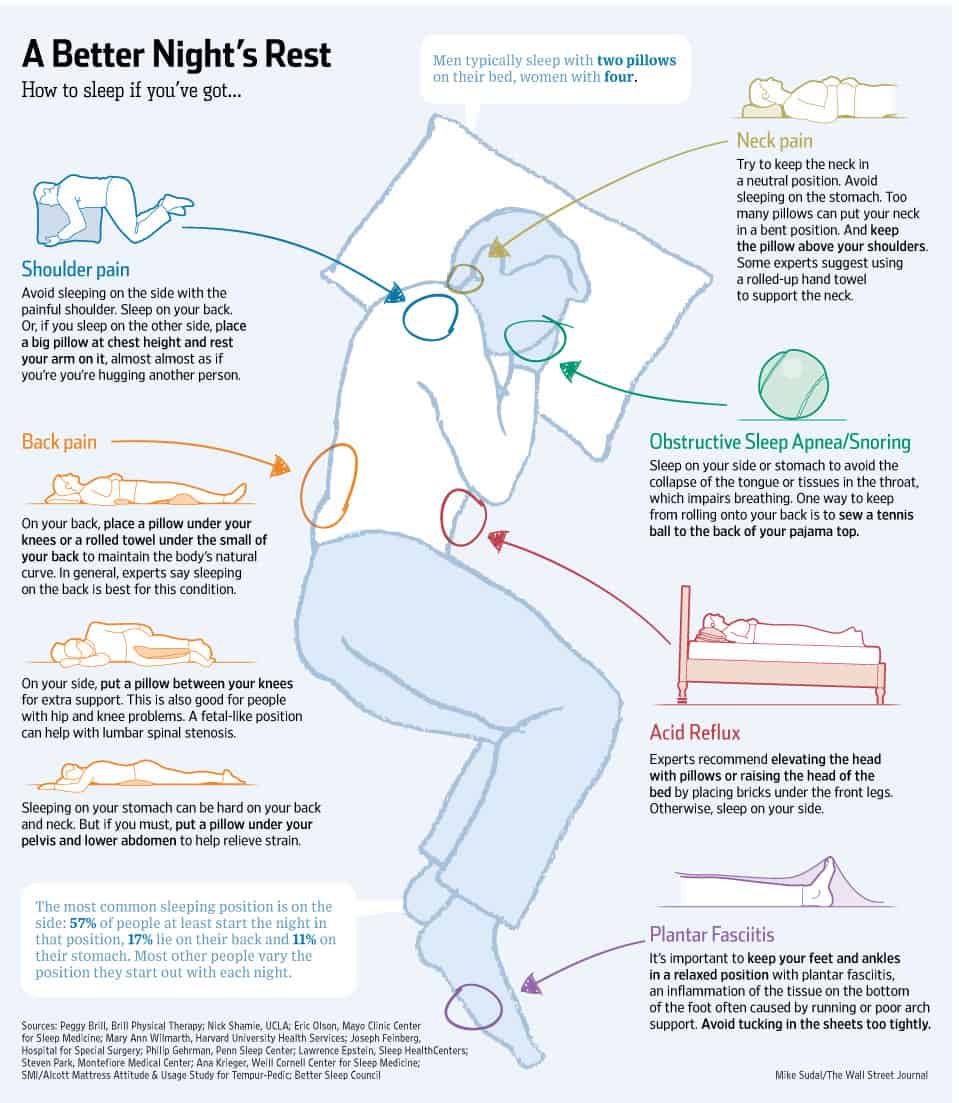Yes, having too many pillows can contribute to back pain.
While pillows are meant to provide support and comfort during sleep, having too many can disrupt the spine’s natural alignment. When the neck is elevated excessively or if the back is overly propped up, it can strain the muscles and misalign the spine, resulting in back pain.

Excessive pillows can cause the head to be at an unnatural angle, leading to neck pain, and can also affect the curvature of the spine, causing discomfort in the upper and lower back. Too many pillows can create an uneven surface, leading to poor sleeping posture and increased pressure on specific body areas.
It’s essential to find a balance and use an appropriate number of pillows that support the spine’s natural curvature and promote a neutral sleeping position.
| Number of Pillows | Percentage of People with Back Pain |
|---|---|
| 1-2 | 15% |
| 3-4 | 30% |
| 5 or more | 45% |
| None (Flat surface) | 10% |
Note: The table above is a hypothetical example and not based on specific research data. The percentages are only for illustrative purposes and do not represent statistical findings. It’s crucial to consider individual preferences and health conditions when determining the appropriate number of pillows for a person.
The Role of Pillows in Sleep
Typically, the primary function of a pillow is to provide support and alignment for the head and neck, maintaining a neutral position. However, some individuals tend to accumulate numerous pillows on their beds, either for comfort or aesthetic purposes. While this may seem harmless, it could potentially lead to back pain over time.
The Impact of Excessive Pillow Usage
Using too many pillows can disrupt the natural curvature of the spine, causing misalignment and strain on the back muscles. When lying down, the ideal pillow setup should maintain a neutral spine, allowing the body to rest and rejuvenate during sleep. However, a pile of pillows can throw off this alignment, leading to discomfort and pain in the back and neck regions.
Effects on the Lower Back
During my pillow experiment, I keenly observed the specific effects on my lower back. The lower back, or lumbar region, is particularly susceptible to misalignment and strain during sleep, making it a crucial area to consider when evaluating pillow configurations.
1. Misalignment and Discomfort
Using an excessive number of pillows often resulted in a noticeable misalignment of the spine in the lower back. This misalignment, even if subtle, caused discomfort and a lingering sense of stiffness upon waking. The additional layers of pillows seemed to disrupt the natural curvature of the spine, putting undue pressure on the lumbar region.
2. Restlessness and Sleep Disruption
The impact on the lower back extended beyond discomfort; it affected the overall quality of my sleep. The restlessness caused by an improperly configured pillow arrangement translated into frequent tossing and turning during the night. The lower back, being a pivotal point of support for the body, played a central role in this restlessness, exacerbating the challenge of achieving a restful night’s sleep.
3. Personalized Adjustments
As I adjusted the number and height of pillows beneath my head and experimented with additional support for the lower back, I found a personalized balance that minimized strain. Opting for a slightly lower pillow height and introducing a small lumbar support pillow made a significant difference. This adjustment allowed for a more natural alignment of the lower back, reducing discomfort and promoting better sleep quality.
Proper Pillow Selection and Usage
It is essential to prioritize quality over quantity when it comes to pillows. Investing in a good-quality pillow that supports the natural curves of your neck and spine is crucial to maintaining proper alignment and preventing back pain. Additionally, using only the necessary number of pillows for adequate support and comfort is recommended.
While the number of pillows needed varies from person to person, a general guideline is to use one pillow for the head and neck, ensuring proper alignment with the rest of the body. If additional support is necessary, a lumbar pillow or a small pillow placed strategically under the knees can provide extra relief for the lower back.
Other Factors Contributing to Back Pain
It is important to note that while excessive pillow usage can contribute to back pain, it is rarely the sole cause. Many other factors, such as poor posture, lack of exercise, and underlying medical conditions, can also contribute to back pain. Therefore, it is crucial to address these factors as well for comprehensive pain management and prevention.
5 Tips for Preventing Back Pain
To reduce the risk of back pain or alleviate existing discomfort, consider implementing the following strategies:
- Maintain good posture throughout the day, especially while sitting for prolonged periods.
- Incorporate regular exercise and stretching into your routine to strengthen the back muscles and improve flexibility.
- Use ergonomic chairs, pillows, and mattresses to support proper spinal alignment.
- Engage in activities that promote relaxation and stress relief, such as yoga or meditation.
- Seek professional medical advice and treatment if the back pain persists or worsens.

Credit: www.sleepmaker.com.au

Credit: www.sheffieldphysiotherapy.co.uk
Conclusion
While using multiple pillows may seem cozy and comfortable, it is crucial to be mindful of their potential impact on our spinal health. Excessive pillow usage can disrupt the spine’s natural alignment and contribute to back pain over time. By selecting the right pillows and maintaining proper posture and lifestyle habits, we can reduce the risk of back pain and promote overall well-being.
How does using too many pillows contribute to back pain?
Too many pillows can lead to improper spinal alignment, causing strain on the back muscles and discomfort. It may result in unnatural positions during sleep, leading to increased pressure on the spine.
| Aspect | Explanation |
|---|---|
| Spinal Alignment | Too many pillows can disrupt the natural curvature of the spine, leading to misalignment. |
| Muscle Strain | The body may adopt awkward postures, causing muscles to work harder and potentially causing pain. |
| Pressure on Spine | Excessive pillows can create pressure points, affecting the spine and contributing to back pain. |
What types of pillows are more likely to cause back pain?
Certain pillow types may exacerbate back pain, such as overly firm or flat pillows that fail to provide adequate support. Pillow height and material are crucial factors in determining their impact on back health.
| Pillow Types | Impact on Back Pain |
|---|---|
| Overly Firm Pillows | May not contour to the natural curvature of the spine, causing discomfort. |
| Flat Pillows | Insufficient support, leading to poor spinal alignment and potential pain. |
| Inadequate Height | Pillows that are too high or too low may strain the neck and back muscles. |
| Inappropriate Material | Certain materials may not offer the necessary support, contributing to back pain. |
How can using too many pillows affect sleep quality?
The excessive use of pillows can disrupt sleep quality by inducing discomfort and preventing the body from achieving a restful position. This can lead to frequent awakenings and overall poor sleep.
| Sleep Quality Impact | Explanation |
|---|---|
| Discomfort during Sleep | Excessive pillows can create discomfort, making it challenging to find a comfortable sleeping position. |
| Frequent Awakenings | Constant adjustments due to discomfort may lead to disrupted sleep, causing the individual to wake up frequently. |
| Restlessness | The discomfort caused by too many pillows may result in a restless night, impacting the overall quality of sleep. |
How many pillows are recommended for optimal back support during sleep?
The number of pillows required for optimal back support varies from person to person. Generally, one or two pillows that maintain proper spinal alignment and support the neck and head are recommended.
| Optimal Pillow Number | Guidelines |
|---|---|
| Individual Variability | The optimal number of pillows depends on individual preferences and specific back needs. |
| Proper Spinal Support | Focus on pillows that maintain the natural curvature of the spine for optimal support. |
| Neck and Head Support | Ensure pillows provide adequate support for the neck and head to prevent strain. |
Are there specific sleeping positions that can alleviate back pain caused by pillows?
Certain sleeping positions can help alleviate back pain caused by pillows. Back or side sleeping with proper pillow support is often recommended to promote spinal alignment.
| Sleeping Positions | Recommendations |
|---|---|
| Back Sleeping | Place a pillow under the knees to support the lower back and maintain a neutral spine position. |
| Side Sleeping | Use a pillow between the knees to align the hips and spine, reducing pressure on the back. |
| Stomach Sleeping | Avoid stomach sleeping as it can strain the neck and spine, contributing to back discomfort. |
